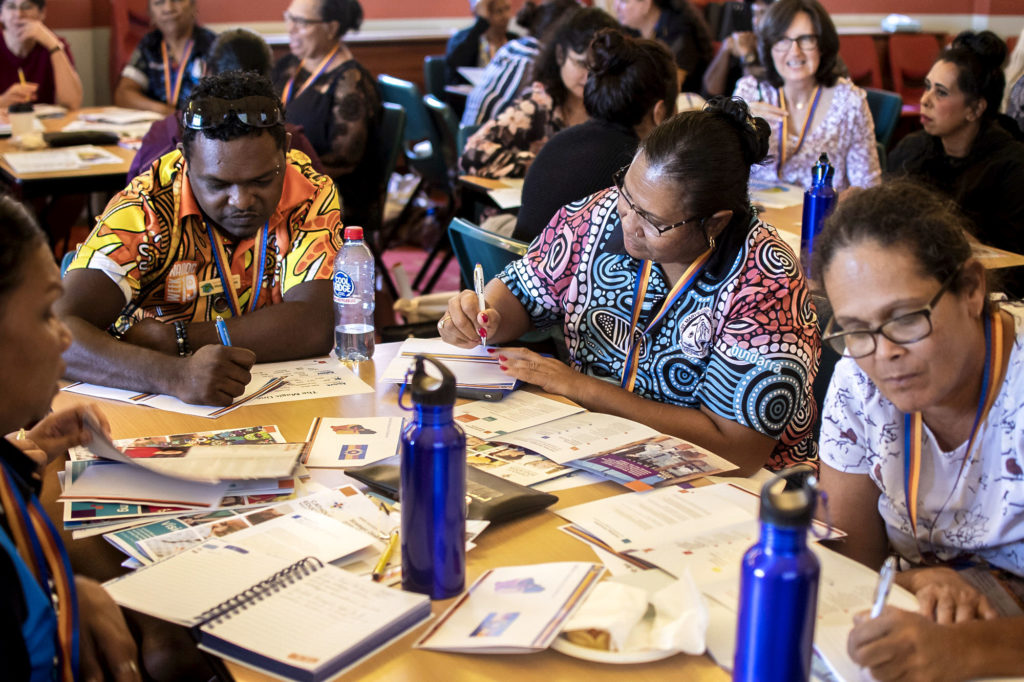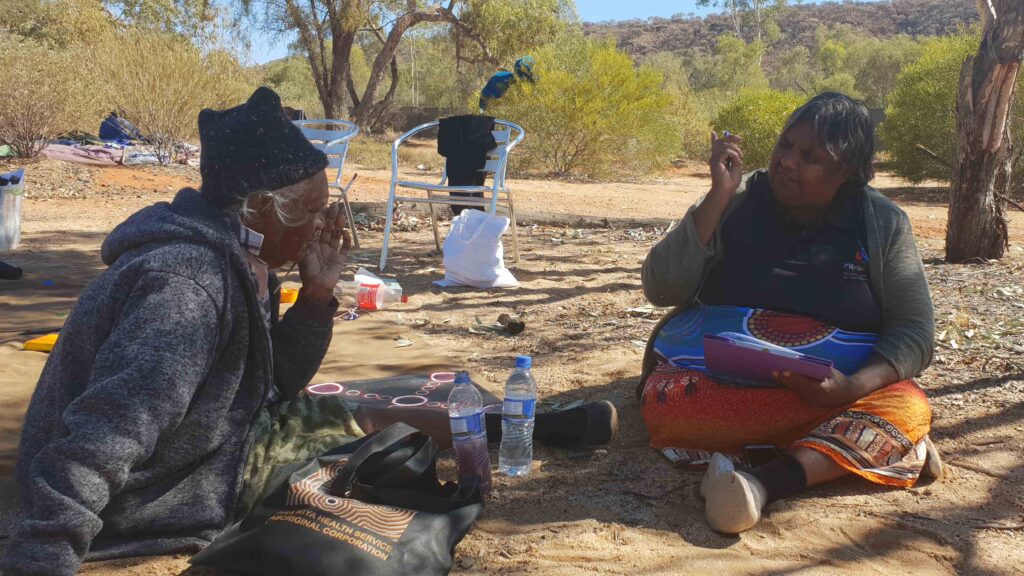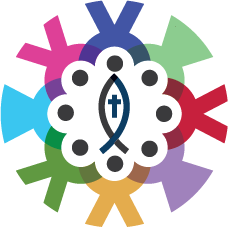Senate Report

Indigenous Australians remain the most disadvantaged and marginalised group in Australia. On all the standard indicators of poverty and disadvantage, Indigenous people emerge as the most socially and economically deprived:
Although poverty in Australia is evident among all ethnic groups, it is Indigenous Australians who appear most profoundly affected by poverty. Research has shown, over the past thirty years since the Henderson Inquiry into poverty, that Indigenous Australians are significantly worse off than non-Indigenous Australians, according to all social indicators. Not only is poverty deeply entrenched, but the causes are also complex despite government policies directed towards achieving economic equality for Indigenous Australians, there has been little improvement to their relative socioeconomic status, according to standard social indicators (Page 301).
One issue is the inappropriate use of the nuclear family as the income unit in which income is assumed to be shared. Aboriginal culture places considerable emphasis on the extended rather than the nuclear family and there are strong cultural obligations to share resources. In addition, the non-material poverty, in terms of dispossession from the land, and absolute material deprivation suffered by Aboriginal people suggest a different order of poverty from that experienced by the rest of the population (Page 301).
The Aboriginal and Torres Strait Islander Commission (ATSIC) also noted that whereas commentators have indicated that most poverty in Australia is relative poverty, some Indigenous communities also face absolute poverty which is reflected in high infant mortality rates and severe malnutrition. ATSIC stated that the poverty among Indigenous can be illustrated through a number of key points (Page 302).
- Most indicators of poverty and related disadvantage show that Indigenous people are between two and three times worse off than non-Indigenous people in Australia.
- About 30 per cent of Indigenous households are in income poverty, which indicates that over 120,000 Indigenous people are living below the poverty line.
- Indigenous unemployment rates, which are affected by Community Development Employment Projects (CDEP) participation, are well over twice that of non-Indigenous people in cities and regional centres and are much higher in remote areas.
- Being fully engaged in either employment or education decreases the likelihood of poverty. Indigenous people in full-time employment or education is around 30 per cent of each age cohort, compared to at least 50 per cent of non-Indigenous people in each age cohort.
- The proportion of Indigenous teenagers (aged 15 to 19 years) not fully engaged in work or education is three times that of non- Indigenous people (Page 302).
- Approximately 70 per cent of young Indigenous adults (aged 20-24 years), are not fully engaged with work or education.
- Approximately 50 per cent of Indigenous adults are reliant on some form of welfare payment and for young people (aged 15 to 24 years) the proportion is only slightly lower (Page 303).
- As sole parents are vulnerable to poverty, it is of concern that a relatively high proportion of young Indigenous are currently receiving the single Parenting Payment – upwards of 15 per cent of young Indigenous women (compared with around 4 per cent of non-Indigenous women).
- Indigenous people suffer ill-health and disability at greater rates than non-Indigenous people. This leads to life expectancy rates for Indigenous people being around 20 years less than non-Indigenous rates.
- Ill-health impacts significantly on work opportunities and places a burden of care on individuals and communities (Page 303).
- Families relying on public or private rent are more vulnerable to poverty. For Indigenous people nearly 70 per cent are housed in some form of rental property.
- Some remote Indigenous communities live in absolute poverty, measured by poor infrastructure with associated diseases that are largely eradicated in other parts of Australia (Page 303).
Studies have found that indigenous poverty appears to be like other forms of poverty. fifth low income being associated with poor outcomes in other spheres of life, such as high arrest rates, poor health, and inadequate housing. Studies have also found that a distinguishing feature of Indigenous poverty is the depth of poverty experienced across a range of welfare indicators, suggesting that the nature of poverty and deprivation and the correlation between socioeconomic status, income and health outcomes may be quite different for Indigenous and non-Indigenous Australians (Page 304).
Aboriginal Employment

ATSIC emphasised the need for economic development and self-sufficiency as the principal means of overcoming welfare dependency and concomitant social problems in Indigenous communities. Mr John Boersig of the Coalition of Aboriginal Legal Services NSW (COALS) noted that ’none of the people I speak with want to be dependent on welfare; they want to develop a sense of self determination’ (Page 304).
ATSIC highlighted several issues that need to be considered in improving the employment opportunities of Indigenous people:
- Greater emphasise needs to be given to the notion of meaningful jobs, that is, full-time salaried and sustainable employment, as well as on-going parttime employment in communities drawing on the unique circumstances, skills and resources of Indigenous people (Page 305).
- The demand side problems of generating sufficient jobs where Indigenous people live are significant. Relying on the traditional rural industries will not be sufficient given their decline and reduced demand for labour because of mechanisation. Accordingly, a concerted and proactive approach will be required by Indigenous representatives, government, and industry to identify market opportunities, meet niche demands and respond to new technologies wherever possible (Page 305).
- Various forms of assistance to help enterprises and industries establish on or near Indigenous land and to see them through to viability may need to be considered. Examples may include tax exemptions and tax holidays as incentives, seed funding, wage subsidies and marketing support (Page 306).
- Management of national parks, sustainable wildlife harvesting, protection and rehabilitation of lands and seas, and aquaculture all have considerable potential given the comparative advantage that Indigenous people have in these areas and their consistency with cultural values (Page 306).
- Major established service industries such as health, education, administration, financial services, and stores can all provide sustainable sources of employment in remote and regional centres (Page 306).
- Indigenous art and culture are already significant generators of employment and income for Indigenous people. Often associated with art and culture, tourism is also a key sector for Indigenous people (Page 306).
- There are significant supply side problems in relation to Indigenous employment, with low levels of general education and literacy, work experience, and health standards often characterising the Indigenous workforce. Significant effort and resources must be applied in assisting Aboriginal people to be employment ready (Page 306).
- Partnerships with the private sector is a key concept in the context of Indigenous economic development. For example, the non-Government organisation, Indigenous Enterprise Partnerships (IEP), operating principally in Cape York at this stage, aims to foster partnerships that are a dynamic two-way mechanism that enable philanthropic and corporate Australia to work with Indigenous communities and organisations in a range of areas concerned with economic development and economic and financial management, including at the family level (Page 306).
- The idea of partnerships is also fundamental to the development of whole of government service delivery model currently being negotiated with people living in Indigenous communities. This approach, arising from a Council of Australian Governments (COAG) decision to trial a number of whole-of-government arrangements with Indigenous communities, aims to develop a different form of engagement between government and the Indigenous community on the basis of negotiations as equal parties and with tangible outcomes as the objective (Page 306).
Impacts on Indigenous Health

The Indigenous population is disadvantaged across a range of socio-economic factors, such as employment, education and housing, and these factors have an impact on health outcomes. However, socio-economic status alone does not explain the variations in health status that exist between Indigenous and other Australians. Health risk factors (for example, smoking, alcohol misuse) and other risk factors (for example, poor housing, exposure to violence) also play a part in explaining the differential burden of disease between population groups. Evidence also suggests that the social environment partially explains health outcomes, including the immediate local environment, social connections with family and the community and control or perceived control in the workplace and the wider society. Indigenous people are disadvantaged in this respect and are often characterised by a sense of hopelessness and a perceived loss of ’control’ over life events (Page 315).
Indigenous people experience lower levels of access to health services than the general population, even though they were twice as likely to be hospitalised. This is due to a number of factors, including the fact that Indigenous people are more likely than other Australians to live outside urban areas and therefore lack ready access to a range of urban-centred health services and facilities. Other factors limiting access include the availability of transport, the ability to speak English, and cultural factors such as the availability of same-sex Indigenous health workers (Page 316).
Patterns of expenditure indicate differences between Indigenous and the non-Indigenous population in the way that funds are spent on health services. Greater amounts were spent on ATSI people in relation to community and public health services, patient transport, public hospital care (both admitted and non-admitted patient services), and mental health institutions. Lesser amounts were spent through Medicare, the PBS, high-level residential aged care, and private health services than for other Australians (Page 316).
Reference: The Senate, Community Affairs References Committee. (2004). A hand up not a handout: Renewing the fight against poverty, Report on poverty and financial hardship. Senate Printing Unit, Parliament House, Canberra. Pages 301 – 316.

